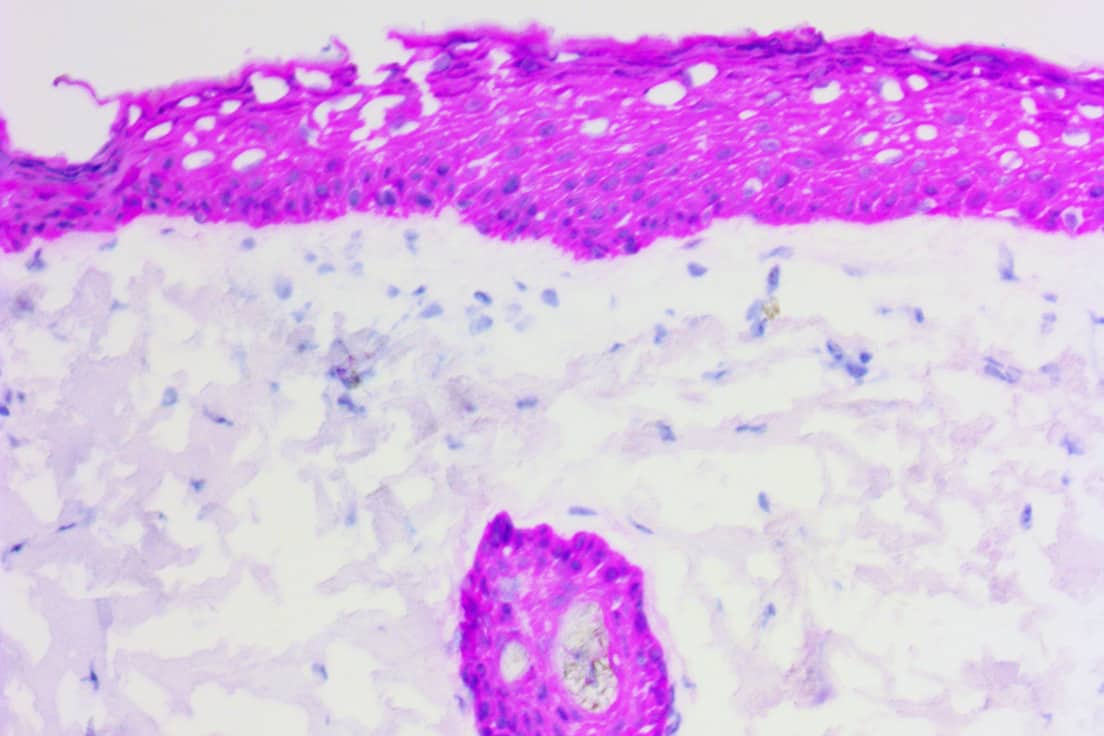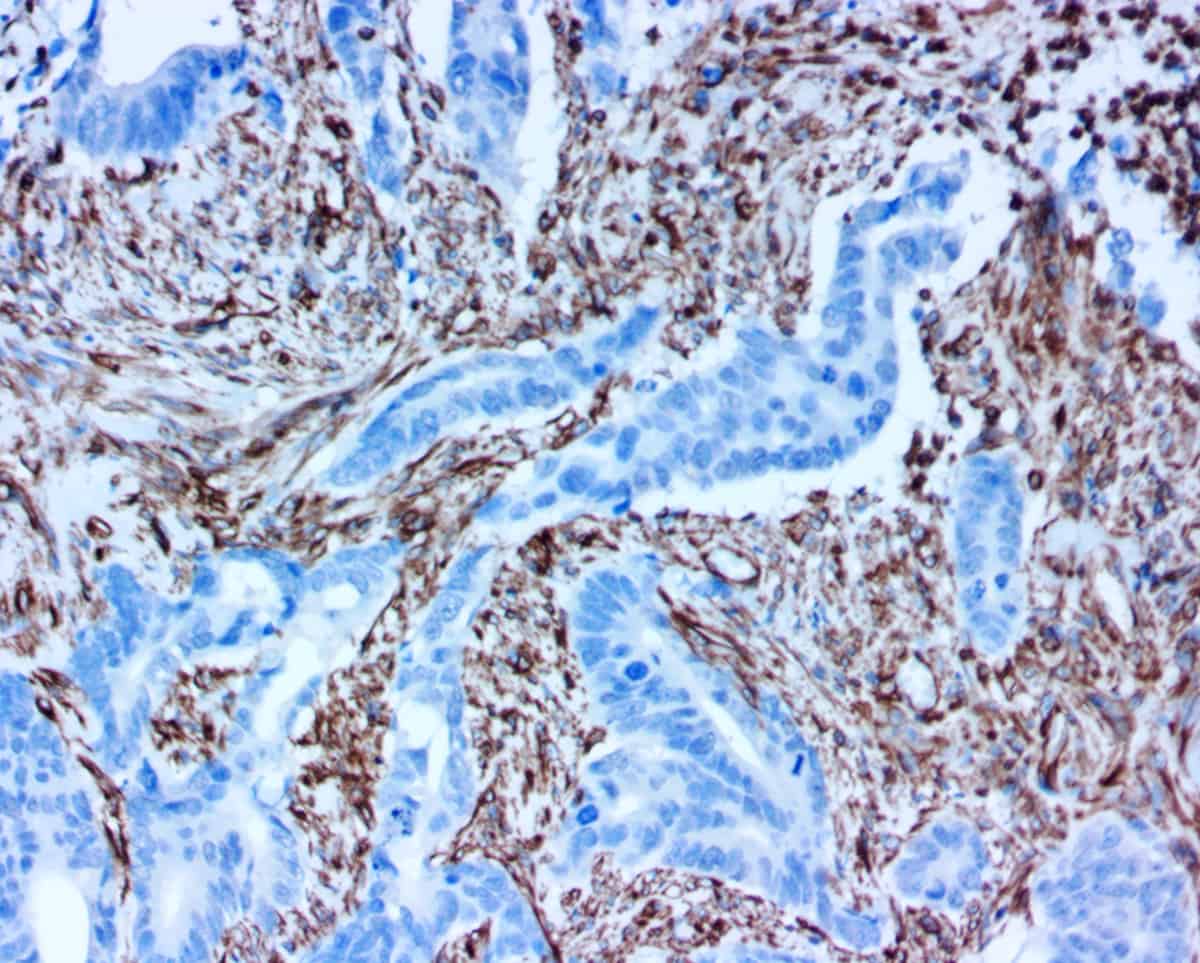Skin Cancer and Mohs Micrographic Surgery
Skin cancer is the uncontrolled growth of abnormal skin cells. It occurs when unrepaired DNA damage to skin cells (most often caused by ultraviolet radiation from sunshine or tanning beds) triggers mutations, or genetic defects, that lead the skin cells to multiply rapidly and form malignant tumors. Below are summaries for the most common forms of skin cancer: basal cell carcinoma (BCC), squamous cell carcinoma (SCC), and melanoma.
Mohs micrographic surgery has the highest cure rate of all treatments for skin cancers — more than 99% for new skin cancers and 95% of recurring cancers. The goal is to remove as much of it as possible while saving the healthy tissue around it. To learn more about Mohs surgery, click on the blue buttons after each description.


What are the different types of skin cancer?
Melanoma is one of the most dangerous form of skin cancer. These tumors originate in the pigment-producing melanocytes in the basal layer of the epidermis. The majority of melanomas are black or brown, but they can also be skin-colored, pink, red, purple, blue or white. Growths on the skin are usually harmless — but not always. Anyone who has more than 100 moles is at greater risk for melanoma. The first signs can appear in one or more atypical moles. That’s why it’s so important to get to know your skin very well and to recognize any changes in the moles on your body.
Look for the ABCDE signs of melanoma:
A – Asymmetry
B – Border
C – Color
D – Diameter
E – Evolving
If melanoma is recognized and treated early, it is almost always curable, but if it is not, the cancer can advance and spread to other parts of the body, where it becomes hard to treat and can be fatal. While it is not the most common of the skin cancers, it is the most fatal. In 2016, an estimated 76,380 of these will be invasive melanomas, with about 46,870 in males and 29,510 in women. Melanoma kills an estimated 10,130 people in the US annually.
Mohs surgery is the most successful method of removing cancerous skin cells while minimizing damage to the surrounding healthy tissue. To learn more about the procedure click the link below:
Learn More About Mohs surgeryBasal Cell Carcinoma (BCCs) are abnormal, uncontrolled growths or lesions that arise in the skin’s basal cells, which line the deepest layer of the epidermis BCCs often look like open sores, red patches, pink growths, shiny bumps, or scars and are usually caused by a combination of cumulative and intense, occasional sun exposure.
BCC almost never spreads beyond the original tumor site. It shouldn’t be taken lightly, though: it can be disfiguring if not treated promptly.
More than 4 million cases of basal cell carcinoma are diagnosed in the U.S. each year. In fact, BCC is the most frequently occurring form of all cancers. More than one out of every three new cancers is a skin cancer, and the vast majority are BCCs.
Warning Signs for Basal Cell Carcinoma:
Open Sores – An open sore that bleeds, oozes, or crusts and remains open for a few weeks, only to heal up and then bleed again. A persistent, non–healing sore is a very common sign of an early BCC.
Reddish Patches or Irritated Areas – A reddish patch or irritated area, frequently occurring on the face, chest, shoulders, arms, or legs. Sometimes the patch crusts. It may also itch or hurt. At other times, it persists with no discomfort.
Shiny Bumps or Nodules – A shiny bump or nodule that is pearly or clear and is often pink, red, or white. The bump can also be tan, black, or brown, especially in dark-haired people, and can be confused with a normal mole.
Pink Growth – A pink growth with a slightly elevated rolled border and a crusted indentation in the center. As the growth slowly enlarges, tiny blood vessels may develop on the surface.
Scar-like Areas – A scar-like area that is white, yellow or waxy, and often has poorly defined borders; the skin itself appears shiny and taut. This warning sign may indicate the presence of an invasive BCC that is larger than it appears to be on the surface.
Mohs surgery is the most successful method of removing cancerous skin cells while minimizing damage to the surrounding healthy tissue. To learn more about the procedure click the link below:
Learn MoreAbout Mohs surgerySquamous cell carcinoma (SCC) is the second most common form of skin cancer, is an uncontrolled growth of abnormal cells arising from the squamous cells in the epidermis, the skin’s outermost layer. It is sometimes called cutaneous squamous cell carcinoma (CSCC) to differentiate it from very different kinds of SCCs elsewhere in the body. Cutaneous is the scientific word for “related to or affecting the skin.”
SCCs often look like scaly red patches, open sores, warts or elevated growths with a central depression; they may crust or bleed. They can become disfiguring and sometimes deadly if allowed to grow. More than 1 million cases of squamous cell carcinoma are diagnosed each year in the U.S., which translates to about 115 cases diagnosed every hour. Incidence has increased up to 200 percent in the past three decades in the U.S., and more than 15,000 Americans die each year from the disease.
SCCs may occur on all areas of the body, including the mucous membranes and genitals, but are most common in areas frequently exposed to the sun, such as the rim of the ear, lower lip, face, balding scalp, neck, hands, arms and legs. The skin in these areas often reveals telltale signs of sun damage, including wrinkles, pigment changes, freckles, “age spots,” loss of elasticity and broken blood vessels.
Warning Signs – Squamous cell carcinomas typically appear as persistent, thick, rough, scaly patches that may bleed. They often look like warts and sometimes have open sores with a raised border and crusted surface over an elevated pebbly base. The skin around them typically shows signs of sun damage such as wrinkling, pigment changes and loss of elasticity.
Any change in a preexisting skin growth, such as an open sore that fails to heal, or the development of a new growth, should prompt an immediate visit to a physician.
You may be at risk if you have:
– A persistent, scaly red patch with irregular borders that sometimes crusts or bleeds…
– An elevated growth with a central depression that occasionally bleeds. It may rapidly increase in size…
– An open sore that bleeds or crusts and persists for weeks…
– And/or a wart-like growth that crusts and occasionally bleeds.
Mohs surgery is the most successful method of removing cancerous skin cells while minimizing damage to the surrounding healthy tissue. To learn more about the procedure click the link below:
Learn More About Mohs surgery









